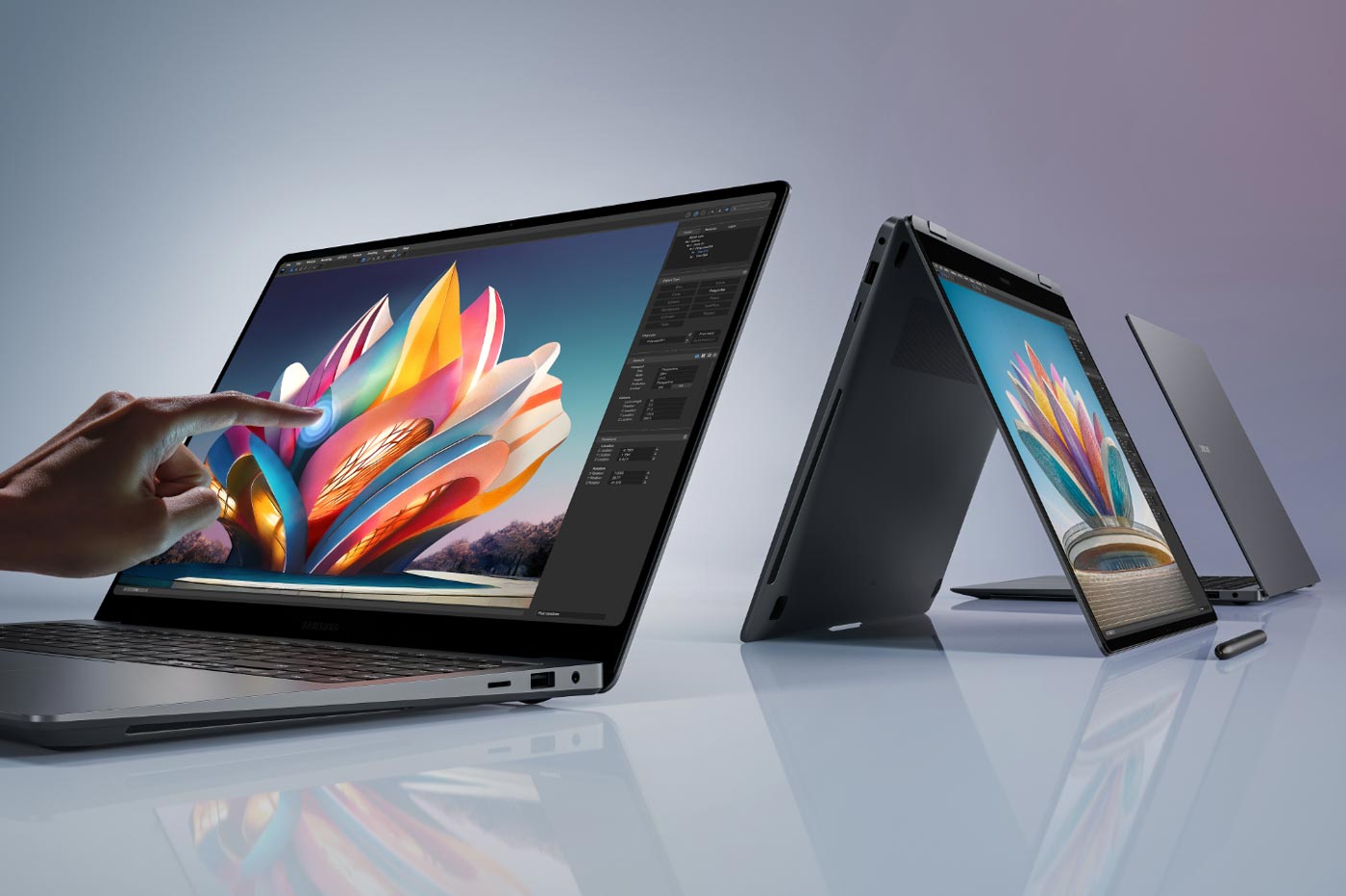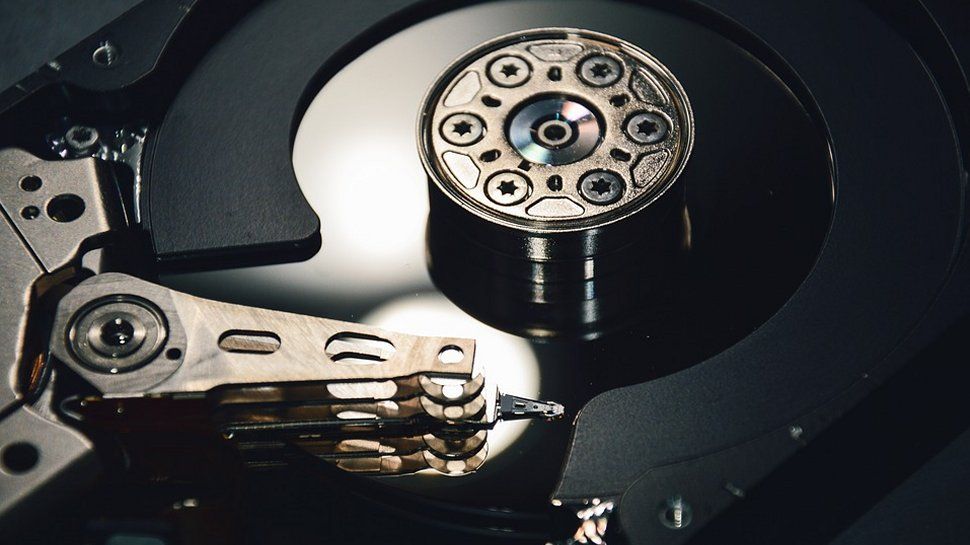With a 12.4-inch display, good battery life, lots of internal storage, and a 4G cellular radio, the $399.99 Doogee T30 Max is decently equipped for delivering media on the go. However, we wish its processor had a little more pep, its speakers had a little more depth, and its Android software had a little more power. It’s an acceptable starting point if you want a large Android tablet. However, we suggest you consider the Samsung Galaxy Tab S9 FE+ ($599.99, though available for $479.99 as of this writing), our Editors’ Choice winner, thanks to its faster performance, even better screen, more refined software, and included stylus.
Design: A Simple Slate
The Doogee T30 Max sports a basic design with a glass front and uniform black bezel around the screen. The back features a leather-like soft-touch finish available in black or green, which adds a touch of class while also providing a grippy surface. Flat side edges give the T30 Max a modern look. Though the tablet is comfortable to hold, the seam between the glass and frame is somewhat noticeable.
(Credit: Iyaz Akhtar )
Measuring 7.30 by 11.22 by 0.31 inches (HWD) and 1.52 pounds, the T30 Max is about the same size as the Galaxy Tab S9 FE+ (7.30 by 11.24 by 0.26 inches, 1.38 pounds).
With a front-facing camera on the long edge, the T30 Max is meant to be used in landscape mode. The top edge houses a combined power button/fingerprint sensor as well as the volume rocker. The fingerprint sensor works so inconsistently, however, that I opted to use a PIN code for security instead. Two speaker grilles and a combined SIM/microSD card tray are on the left short side, while two more speaker grilles and a USB-C port are on the right. Pogo pin connectors and two attachment points for accessories line the bottom long edge. A circular camera module sits on the back panel, along with a shiny Doogee logo.
(Credit: Iyaz Akhtar)
The T30 Max lacks a durability rating. The Galaxy Tab S9 FE+, on the other hand, is rated IP68, meaning it is dustproof and waterproof for up to 30 minutes.
Display: Large and Sharp, But Not the Brightest
The T30 Max has a 12.4-inch LCD with a resolution of 2,560 by 1,600 pixels, a 60Hz refresh rate, and a peak brightness of 600 nits. For comparison, the Galaxy Tab S9 FE+ also has a 12.4-inch LCD at 2,560 by 1,600 pixels, but with a 90Hz refresh rate and a maximum brightness of 720 nits, making it faster and brighter.
(Credit: Iyaz Akhtar)
Video content looks great on the tablet’s big screen, with vivid colors and sharp detail. However, I found the display struggles with brightness outdoors in sunlight, and the highly reflective front glass doesn’t help visibility.
Audio: Plenty of Volume, But Little Depth
Thanks to the T30 Max’s size, stereo separation between the side-mounted speakers is decent. However, its audio sounds somewhat thin and lacks bass. For example, you won’t hear the lowest bass notes of our test track, The Knife’s “Silent Shout.” When I played Metallica’s “Enter Sandman,” the T30 Max reached a maximum volume of 93.7dB. That’s loud enough to fill a small room, but it doesn’t help with the quality. Explosions, crashes, and other sound elements fall a little flat when watching movies.
The tablet lacks a 3.5mm headphone jack, so for the best audio experience, pair it with a good set of Bluetooth headphones.
Performance: Don’t Push It
The tablet is powered by a MediaTek Helio G99 chip with 8GB of RAM and 512GB of storage—far more base storage than most tablets offer at this price. That said, don’t be fooled by Doogee’s marketing claims that the T30 has 20GB of RAM: The tablet combines its 8GB of physical RAM with 12GB of virtual RAM, which typically performs slower than physical RAM. The T30 Max supports an additional 2TB of storage via microSD card.
For comparison, the Galaxy Tab S9 FE+ uses the Exynos 1380 processor and comes with either 128GB or 256GB of storage (and 8GB or 12GB of RAM) with support for microSD cards up to 1TB.
Generally, the T30 Max excels at basic tasks like email, browsing, media playback, and shopping, so everyday activities don’t present a challenge. Pushing beyond the basics, however, can lead to stuttering. For the best gaming experience, for example, you’ll want to stick to casual titles like Tetris and Solitaire.
(Credit: Geekbench/GFXBench/PCMag)
On Geekbench 6, a suite of tools that measures raw computing power, the T30 Max scored 729 on the single-core test and 2,004 on the multi-core test. The Galaxy Tab S9 FE+ with 8GB of RAM scored higher with marks of 1,011 and 2,897.
The PCMark Work 3.0 test evaluates general mobile tasks. Here, the T30 scored 8,715, which is lower than the Tab S9 FE+ (12,223) and the $399 Google Pixel Tablet (10,386).
(Credit: Iyaz Akhtar)
High-end gaming performance is not a strong suit for the T30 Max. On the GFXBench Aztec Ruins test, which measures GPU output, the tablet pushed out just 5.5 frames per second (fps). The Galaxy Tab S9 FE+ fared a little better at 12fps. If you’re looking for a gaming-first tablet that won’t break the bank, check out the RedMagic Nova (starting at $499), which managed 55fps in the same test.
Playing the resource-intensive Genshin Impact worked fine on the lowest graphics setting, which is good news. On medium graphics settings, animations were smooth, but images looked low-res, with jagged outlines around the characters. At the highest graphics settings, the T30 Max struggled, yielding choppy animations, low-resolution graphics, and dropped frames.
Battery: Good for the Size
The T30 Max features a 10,800mAh battery that can charge at 33W with a compatible fast charger. In our battery test, in which we stream HD video over Wi-Fi with the display at full brightness, the T30 Max lasted 8 hours and 5 minutes. This outperforms the 7 hours and 23 minutes of the Tab S9 FE+.
It took 1 hour and 50 minutes to fully charge the tablet from 0 to 100%. A quick 15-minute charge brought the tablet up to 24%, while 30 minutes yielded a 35% charge.
Connectivity: 4G Comes Standard
5G isn’t available on the T30 Max, but 4G comes standard, and the tablet can support up to two physical SIM cards (or one SIM and one microSD card).
On T-Mobile’s 4G network, the T30 Max hit a peak download speed of 17.8Mbps and peak upload speed of 2.32Mbps. For comparison, a Samsung Galaxy Z Fold 6 tested in the same spot (with the 5G radio turned off) managed a better download speed of 20.3Mbps and a higher upload speed of 3.49Mbps.
(Credit: Iyaz Akhtar)
The tablet supports the older Wi-Fi 5 spec. When tested close to a Wi-Fi 6 router, the T30 Max reached a top download speed of 321Mbps and a top upload speed of 13.9Mbps, while the Wi-Fi 6-equipped Galaxy Tab S9 FE+ performed better at 459Mbps down and 15.4Mbps up. When tested at the edge of my Wi-Fi network, the T30 Max’s download speed dropped to 281Mbps, while the upload speed stayed similar at 14.9Mbps. The Tab S9 FE+ posted a stronger download speed of 382Mbps but a slower upload speed of 12.8Mbps.
Cameras: About Average
Camera quality is hardly a main selling point for tablets, so our photography standards are not as high as they are for phones. We expect tablet cameras to be able to take passable snapshots and work well for video calls. The T30 Max does both fine with a 50MP main camera that shoots at 16MP.
(Credit: Iyaz Akhtar)
The rear camera quality is good. By default, the Doogee T30 Max shoots 16MP pictures that capture a fair amount of detail, though colors are a little washed out. If you opt to shoot at the full 50MP resolution, you’ll see that images look nearly identical at first glance, but finer details are preserved upon closer inspection. Zoom in too far, however, and small items like leaves appear splotchy and lacking in definition.
Main camera, 16MP (Credit: Iyaz Akhtar)
Main camera, 50MP (Credit: Iyaz Akhtar)
A 2MP macro camera lets you take photos up close, though its low resolution means that your images never look very sharp. Macro cameras are tablets are not common.
Macro lens sample (Credit: Iyaz Akhtar)
The 20MP front-facing camera takes fine images with respectable detail, though overly bright areas cause oddities in color and create smooth areas that lack definition.
Front-facing camera (Credit: Iyaz Akhtar)
The front and rear cameras capture video with good detail but slightly washed-out color at up to 1080p resolution at 30fps. Audio is somewhat muffled when using the selfie camera compared with the rear shooter. However, both cameras are good enough for video meetings.
Software: Perhaps Too Basic
The T30 Max ships with Android 14. The company says the tablet will receive regular OS and security updates twice a year and that, typically, there will be two years of OS upgrade support. For comparison, Samsung promises four years of OS updates and five years of security upgrades for its Galaxy Tab S9 FE+. Samsung tablets are a better long-term investment if you care about software and security.
Doogee customizes its Android interface only minimally. You’ll see squarish icons and an optional alternative home screen that shows all your apps on the desktop instead of in an app drawer. If you don’t like Doogee’s approach, you can always download a third-party launcher to change the look and functionality. Otherwise, the T30 Max offers a basic Android experience for good and ill. For comparison, Samsung offers advanced software tools through its own One UI, which includes multitasking functionality, a desktop-like mode for productivity, and more.
Verdict: A Big Screen That Leaves Little Impression
A large display, long battery life, and lots of storage for offline viewing make the Doogee T30 Max a fine Android tablet for consuming media. For $400, however, it offers precious little else. For a better experience overall, we suggest you stretch your budget for the Samsung Galaxy Tab S9 FE+, our Editors’ Choice winner for Android tablets. It has more power for gaming and productivity, a brighter screen, smarter software, and a stylus for drawing or taking notes, making it well worth the extra cash.
Pros
The Bottom Line
The Doogee T30 Max’s large screen and long battery life make it a decent Android tablet for media playback, but it otherwise fails to impress.
Like What You’re Reading?
Sign up for Lab Report to get the latest reviews and top product advice delivered right to your inbox.
This newsletter may contain advertising, deals, or affiliate links. Subscribing to a newsletter indicates your consent to our Terms of Use and Privacy Policy. You may unsubscribe from the newsletters at any time.
About Iyaz Akhtar
Mobile Analyst



















